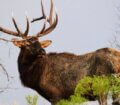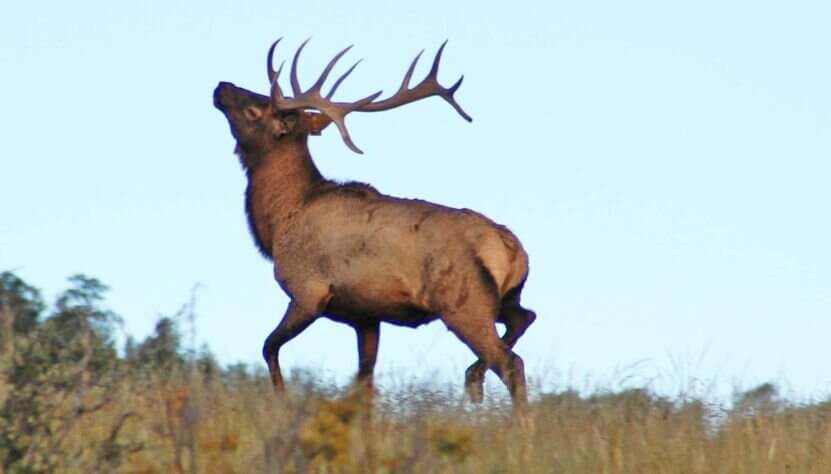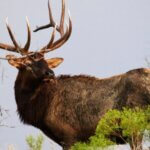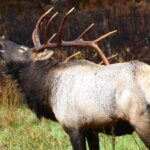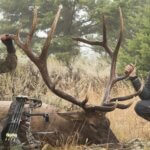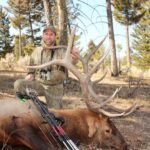Editor’s Note: Will Primos of Flora, Mississippi, has been hunting elk every year since 1988. “I’ve had some fantastic opportunities in my lifetime to call in hundreds of bull elk,” he explains. Primos, the creator of Primos Hunting, generally hunts for elk in three states annually. He’s been producing videos and products for the elk-hunting industry for many years. “We wanted to get the public excited about not just elk but hunting and protecting them as well,” Primos says. “We’re strong supporters of the Rocky Mountain Elk Foundation and its mission.” Primos doesn’t just call and take elk himself, he also guides and calls for other people. Primos has taken or called more than 200+ elk for others for his videos.

Generally I hunt with a group of hunters. When we’re hunting elk, we may call two to six different bulls up before one of our hunters takes a bull with his bow. We always try to take mature bulls, so sometimes we pass-up bulls that other hunters may take. One advantage that I have whether I’m hunting, calling or filming is that I get a real education on learning the body language of the elk and understanding how elk react to certain types of calls. All animals that can be called by a human respond in different ways to calls, according to the terrain and environment in which they live.
In one of the places that we hunt in New Mexico, we may see elk out in the prairie at night. We call this area the “dance floor” because the big bulls chase cows and satellite bulls all night until the sun rises. In the morning, elk may stay out on the prairie, or they’ll move back into the timber at first light. We try to watch the bulls from a great distance because the prairie is so open they’ll spot you and spook. Oftentimes, we wait until they go into the big timber to call them. Then they’ll come looking for us. One thing I have learned is that successful elk hunting with a bow depends on what the terrain is like, how you use the terrain, and what you do in the areas when you pinpoint elk.
For me, elk hunting is more than just taking an elk. One of my most-memorable elk hunts was in the Little Belt Mountains of Montana. My wife, Mary, was with me and our cameraman, Ken Fleming of Alabama. We spotted a nice bull down in a depression between two timbered ridges. We backed out, went out into the open and tried to get into one section of timber where we could call to him with the wind in our favor. As we were going up the ridge of an elk trail to reach the spot where I wanted to call from, I spotted a cow elk 40-yards away from us, walking straight toward me. As I continued looking, I noticed a really-big bull with a wide, tall rack right behind her. When the cow was within 15 yards of us, she stopped, looked at us and tried to understand what we were. While I looked at her, I was hoping to have an opportunity to draw my bow before the bull got to me. The bull was now at 20 yards and bugled. Finally, she spooked and ran. Unsurprisingly, the big bull spooked too. However, thankfully I was able to stop him by making a cow elk call with my diaphragm. Just as the bull stopped, I drew my bow.
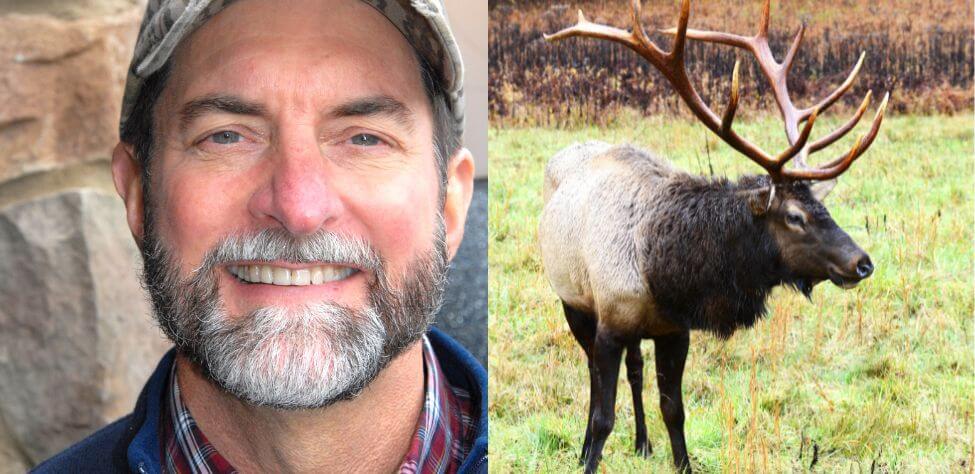
But, when I looked for my sight, I could tell that the sight pin was lower than normal. While I tried to adjust it, the bull saw me and ran off. I never got to take my shot at him. This bull had third points that were about 7-inches long, which were extremely short for a bull his size. Bulls with antlers shaped like a whale’s tail or a fish tail on their 5th and 6th points have the potential to be really-nice mature bulls. Even though this bull had short third points, he still had everything else. His rack was wide and he had long top tines, long beams, great front points and nice fish tails on the top. He probably would have scored 360 inches. Once I thought about what just had happened, I realized that having a cow elk bugle right in front of me was an amazing opportunity. No, I didn’t take the bull, and no, I didn’t take the cow. However, capturing a special moment like that with my wife and cameraman was a memory that would stick with me forever.
I guess that’s one of the reasons I enjoy hunting and calling elk: Not only do I get to watch and experience getting close to animals that often weigh from 800-1,100 pounds, but I also communicate with them and experience the environment where they live. Helping other people see elk who may not have ever seen a bull before is why I continue to return to elk country every year – whether I’m calling, filming and/or attempting to shoot an elk.
Tomorrow: Knowing About Will Primos’s Biggest Bulls
Looking for more content? Check out our YouTube channel and watch From Being a Champion to Homeless by John E. Phillips.
Expert Guidebooks on Elk Hunting: Best Sellers
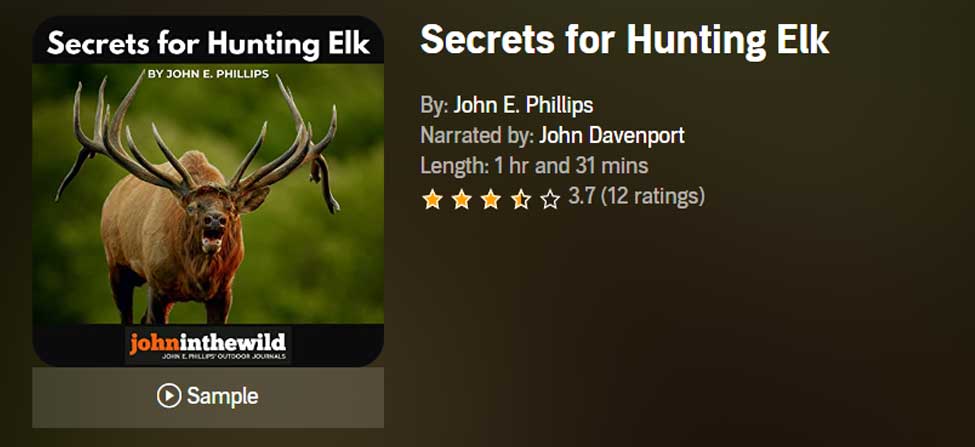
Secrets for Hunting Elk
The quickest, easiest (if there is an easy way), and safest way to find and take that bull elk of a lifetime will be to hunt with a guide.
Chad Schearer, a longtime Montana guide and TV personality, told me, “My hunter is my gun. If I get to the elk, and my hunter isn’t with me, then we don’t take the elk. My job is not only to find the elk but also to help the hunter get to the elk and make the experience as enjoyable as I can for him.” That’s the kind of fella with whom I want to go elk hunting.
An elk hunt can be tough, but it doesn’t have to be so tough that you don’t enjoy it. That’s why this elk hunting book starts with the confessions of an elk guide and with Chad Schearer’s philosophy of what the guide and the hunter’s relationship should be.
A good portion of your success will depend on your physical condition, and Matt Morrett of Harrisburg, Pennsylvania explains how an eastern hunter can get ready physically during June and July to hunt western elk, the animals he describes as, “Like deer or turkeys on steroids.”
Wayne Carlton, well-known elk hunter and TV and video personality from Montrose, Colorado, tells us what types of elk calls to use and what to say to the elk. Mike Miller of Colorado, another elk guide and Mossy Oak video personality, has tactics for the best equipment for bowhunting and gun hunting elk.
You’ll learn helpful strategies and hunting tips in this book, as well as some straightforward hunting methods that will help to make your elk hunt more successful.
“Thanks to the advice in your elk hunting books, I was able to call up a nice 6-point (6X6) bull elk! He was bugling like crazy. I called him in from about a ¼ mile away. Called him into bow range (about 40 yards away). It was a thrill!” ~Rob Brannon
VERSIONS: AUDIBLE & KINDLE
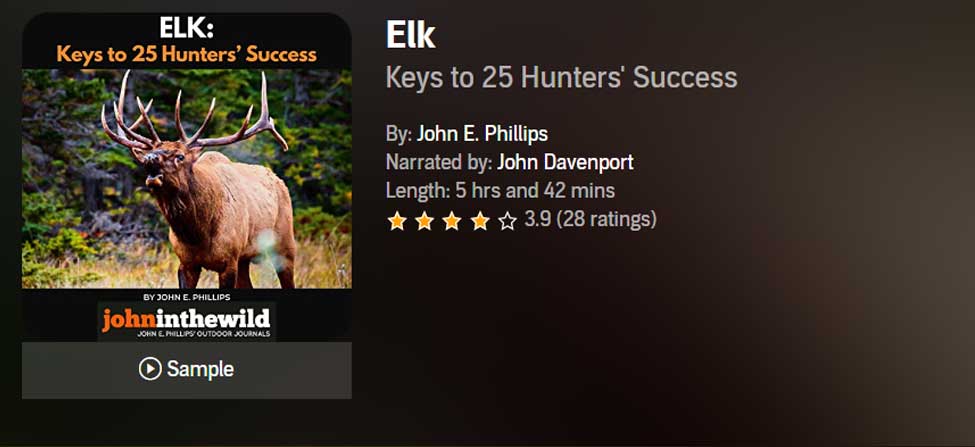
Elk: Keys to 25 Hunters’ Success
Often just one tip or tactic makes the difference in whether you take an elk home to dinner or have to hike back to the truck by yourself. In John E. Phillips’ latest elk book, Elk: Keys to 25 Hunters’ Success, you’ll learn from successful elk hunters the strategies they use to find and take elk.
Many know that the technique that seems to work most often is to hunt where other elk hunters don’t and understand where the elk are before you go on a hunt by studying data from each state, visiting HuntData (see chapter 1), examining maps, and reading postings on elk forums.
This book also tells you how to get ready physically for an elk hunt, including participating in Train to Hunt Competitions, what gear you need to take, how to enjoy a successful do-it-yourself elk hunt, or how to pick the best elk guide for you. You’ll also hear about the X System and the Broken Y System of hunting elk.
Although no one person has all the answers on how to help you find and take your elk, I’m convinced that this book’s outdoors men and women will teach you how to have satisfying elk hunts.
As my friend Karl Badger once told me, “Elk hunting doesn’t get any better than when I ride horses into the high backcountry, see two grizzly bears, hear a pack of wolves howl close to camp all night long, eat plenty of delicious food prepared on a fire and enjoy the company of good friends.”
VERSIONS: AUDIBLE, KINDLE & PRINT
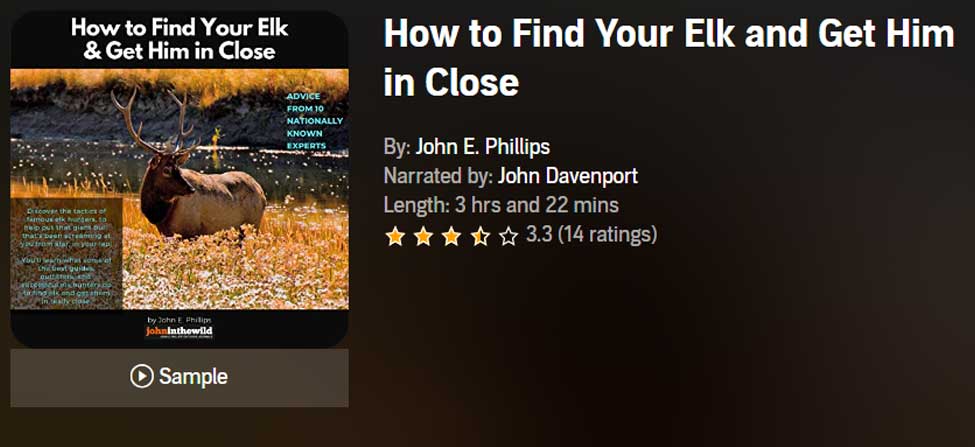
How to Find Your Elk and Get Him in Close will teach you the tactics of 10 nationally known elk hunters, to help put that giant bull that’s been screaming at you from afar, in your lap. You’ll learn what some of the best guides, outfitters, and successful elk hunters do to find elk and get them in really close.
Also in this audiobook, you’ll notice that the majority of the experts call elk to within bow range. We selected numerous bowhunters and bowhunting guides, since the bowhunter has to get much closer to a bull than the gun hunter does – often less than 20 or 30 yards – practically in your lap.
On one elk hunt, I’d heard this bull bugle all morning. My guide had called him within 30 yards, and he was standing just inside black timber. I saw the smoke from his nose wafting out into the icy air less than 30-yards away. All the bull had to do was step out, and I could take the shot with my bow. But then, through no fault of my guide or me, the bull vanished.
The only conclusion I could come up with to understand why the bull I wanted to take with my bow hadn’t stepped out and given me a shot, was because he got raptured. He evidently had left the earth with no trace of himself.
This hunt was when I started wanting to learn more about hunting elk up close. In this book, I’ve tried to find some of the most knowledgeable, experienced, and practical elk hunters. I’ve always found that the best way to learn any outdoor skill, is to either hunt or fish with the best sportsmen in that field.
Often, in elk hunting, that means elk guides, who generally hunt every day of the season and receive a salary for every hunter they guide. So, I’ve put together a group of some of the best elk hunters I know to help us all learn how to find bull elk and get them in close.
VERSIONS: AUDIBLE, KINDLE & PRINT


